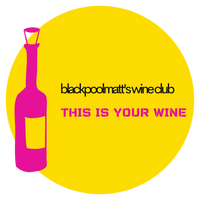Blogs RSS
unusual white varieties
blackpoolmatt's wine club likes to find unusual wines that you're not going to easily find in most retail outlets and as there are so many producers around the world making wines from unlikely grape varieties there are lots of choices. Producers make wine from lesser-known varieties to stand out from the crowd (how much Chardonnay does the world need?), but also because they feel different grape varieties can express a sense of place in various ways. This can happen in two ways: returning to grape varieties which have been neglected but long planted in the region, which is how Rías...
low alcohol wines
A couple of years ago, I tasted a wine from Napa which shall remain nameless and which had a relentlessly high alcohol of 15.8%. Not only did this level of alcohol cause the wine to be out of balance, it's dangerously high: a glass, let alone a bottle, would get you drunk. The wine was borne out of the trend in the late 1990s and 2000s for high-alcohol wines. The grapes are left on the vine for a long time to build up sugar levels, in the belief that it results in more flavor in the wine. Some producers and...
graciano
A few years ago I was talking to Liz Bokisch who with her Catalan/German husband Markus runs the Bokisch winery in Lodi, California. In the 1990s, they pioneered plantings of Spanish/Portuguese grape varieties in the region. They make a single-varietal Graciano, which is originally from Rioja, and I asked her about the variety. She practically swooned as she eugolized about what she called her favorite variety, but then sighed, “But it’s so, so difficult to work with.” And that’s why Graciano by the late 1970s in its native Rioja was almost extinct. It was only because Spain in general returned to...
crémant
Champagne is sparkling wine, but not all sparkling wine is champagne. There are plenty of alternatives to champagne, even if they vary in style and quality—and not everything should be the same. Champagne itself is a small region, producing around 300m bottles a year—if we had to rely solely on champagne for our bubbles, we’d quickly run out, not just of wine but money. The closest international alternatives to champagne are cooler regions like England and Tasmania, though even these high-quality wines vary: the high acidity of England requires some dosage, while Tasmania will be a little fruitier. Franciacorta in...
spotlight on portugal and galicia
Over the last 30 years, wine has become increasingly homogeneous. Walk into any store, whether a supermarket or an independent retailer, and you'll find rows of Pinot Noir, Chardonnay, and Cabernet Sauvignon. For the general consumer, there are clear advantages: familiarity, consistency, and quality. However, it doesn't encourage experimentation, which is a great pity as there are so many opportunities to try something new or different. As anyone will know who owns the mammoth Wine Grapes book, co-edited by Jancis Robinson, there are well over 1,300 distinct grape varieties, which gives an idea of the possibilities in producing many different...
Tags
- All
- adelaide hills
- albariño
- alcohol
- alentejo
- aligoté
- alsace
- alta langa
- amber wine
- argentina
- arinto
- asturias
- australia
- austria
- baga
- barbera
- beaujolais
- bical
- blaufränkisch
- blind tastings
- bordeaux blanc
- bugey
- burgenland
- burgundy
- cabernet sauvignon
- california
- carignan
- castilla
- cava
- champagne
- chardonnay
- chile
- cinsault
- corsica
- cortese
- côte roannaise
- coteaux du giennois
- crémant
- crémant d'alsace
- crémant de bourgogne
- crémant de loire
- dão
- douro
- el dorado
- emilia-romagna
- encruzado
- england
- fiano
- field blends
- finger lakes
- france
- frankland river
- Friulano
- gamay
- germany
- gisborne
- godello
- Goriška Brda
- greece
- grenache
- gros manseng
- grüner veltliner
- Hárslevelű
- hawke's bay
- hungary
- italy
- itata
- languedoc
- lemberger
- liguria
- loire valley
- lorraine
- madiran
- malbec
- malvar
- marlborough
- mclaren vale
- mediterranean
- mendoza
- méthode cap classique
- meunier
- meursault
- mourvedre
- Nagy-Somló
- nebbiolo
- new york
- new zealand
- niellucciu
- no alcohol
- nolo
- oregon
- pacherenc du vic-bilh
- país
- Pesecká Leanká
- petit manseng
- piemonte
- pinot gris
- pinot noir
- pinotage
- portugal
- prosecco
- provence
- quincy
- rheingau
- rhône
- rías baixas
- ribeiro
- Ribera del Duero
- ribolla gialla
- rosé
- rossese di dolceaqua
- san luis obispo
- sardinia
- sauvignon blanc
- savoie
- sciaccarellu
- sekt
- slovakia
- slovenia
- south africa
- spain
- sparkling wine
- sylvaner
- syrah
- tannat
- tasmania
- valtellina
- vermentino
- vinho verde
- viognier
- washington
- western australia
- wine education
- wset
- württemberg
- yarra valley
